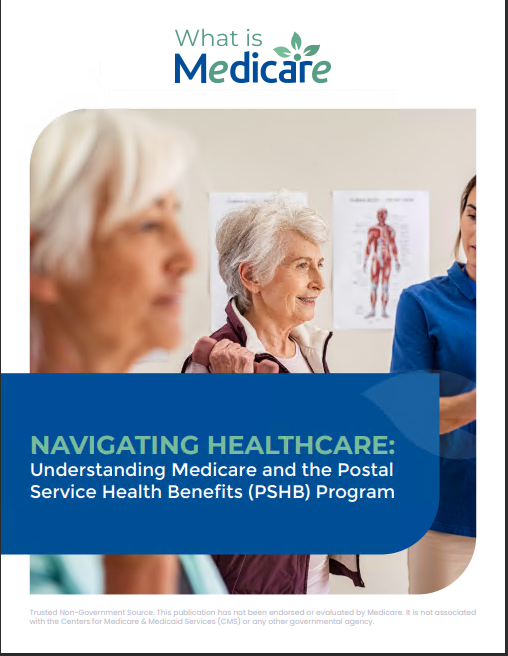Medicare Coinsurance: Managing Shared Healthcare Costs
Introduction: Demystifying Medicare Coinsurance
Medicare coinsurance is a key aspect of healthcare costs for beneficiaries, representing their share of the cost for covered services after meeting deductibles. Understanding the nuances of Medicare coinsurance, including how it works, when it applies, and strategies for managing expenses, is essential for beneficiaries to budget effectively and make informed decisions about their healthcare. In this guide, we’ll explore the intricacies of Medicare coinsurance, empowering beneficiaries to navigate their healthcare expenses with confidence.
What is Medicare Coinsurance?
Medicare coinsurance is a form of cost-sharing where beneficiaries are responsible for paying a percentage of the cost for covered services, while Medicare pays the remaining portion. Here’s an overview of how coinsurance works:
- Percentage-Based Cost-Sharing: Coinsurance represents a percentage of the total cost of covered services, such as medical treatments, procedures, and hospital stays. Beneficiaries pay their share of the cost directly to healthcare providers or facilities.
- After Meeting Deductibles: Coinsurance typically applies after beneficiaries meet their Medicare deductibles, which are initial out-of-pocket expenses they must pay before Medicare coverage begins. Once deductibles are met, coinsurance kicks in for covered services.
- Shared Responsibility: Coinsurance reflects beneficiaries’ shared responsibility for healthcare costs, helping to offset the overall cost of services and encourage prudent use of healthcare resources.
Understanding how Medicare coinsurance works is essential for beneficiaries to anticipate healthcare expenses and plan accordingly.
Types of Medicare Coinsurance
Medicare coinsurance can apply to various types of covered services under different parts of Medicare. Here are some common types of Medicare coinsurance:
- Part A Coinsurance: Medicare Part A coinsurance applies to inpatient hospital stays, skilled nursing facility care, hospice care, and certain home health services. Beneficiaries are responsible for paying a percentage of the cost for these services after meeting the Part A deductible.
- Part B Coinsurance: Medicare Part B coinsurance applies to medical services and outpatient care, including doctor visits, diagnostic tests, durable medical equipment, and preventive services. Beneficiaries are responsible for paying a percentage of the cost for these services after meeting the Part B deductible.
- Part D Coinsurance: Medicare Part D coinsurance applies to prescription medications covered under Medicare Part D prescription drug plans. Beneficiaries are responsible for paying a percentage of the cost for covered medications after meeting the plan’s deductible (if applicable) and copayment amounts.
Understanding the types of Medicare coinsurance and when they apply is essential for beneficiaries to navigate their healthcare expenses effectively.
How Medicare Coinsurance Impacts Beneficiaries
Medicare coinsurance plays a significant role in determining beneficiaries’ out-of-pocket expenses for healthcare services. Here’s how coinsurance impacts beneficiaries:
- Financial Responsibility: Coinsurance represents beneficiaries’ share of the cost for covered services, helping to offset the overall cost of healthcare and reduce the financial burden on Medicare.
- Budgeting Considerations: Coinsurance amounts are predictable costs that beneficiaries can budget for in advance, helping them plan for healthcare expenses and manage their finances effectively.
- Access to Care: Coinsurance may influence beneficiaries’ decisions about seeking medical care, as higher coinsurance amounts could deter individuals from accessing necessary services. It’s essential for beneficiaries to consider coinsurance amounts when making healthcare decisions.
- Cost-Sharing Protections: Medicare offers cost-sharing protections for low-income beneficiaries through programs like the Extra Help Program and Medicare Savings Programs, which provide financial assistance with coinsurance and other out-of-pocket expenses.
Understanding how Medicare coinsurance impacts beneficiaries’ access to care and financial well-being is essential for navigating the healthcare system effectively.
Strategies for Managing Medicare Coinsurance
To manage Medicare coinsurance effectively, beneficiaries can consider the following strategies:
- Reviewing Plan Coverage: Review your Medicare plan’s coverage and coinsurance requirements annually during the open enrollment period to ensure your plan meets your healthcare needs and budget. Compare plan options based on coinsurance amounts, coverage for specific services, and overall cost-sharing structure.
- Exploring Supplemental Coverage: Consider purchasing supplemental insurance, such as Medicare Supplement Insurance (Medigap), to help cover coinsurance, deductibles, and other out-of-pocket expenses not covered by Original Medicare (Parts A and B). Medigap plans offer standardized coverage options that can help beneficiaries manage healthcare costs.
- Utilizing Preventive Services: Take advantage of Medicare’s coverage of preventive services at no cost to beneficiaries, including screenings, vaccinations, and wellness visits. By prioritizing preventive care, beneficiaries can potentially avoid more costly treatments down the line and minimize coinsurance expenses.
- Exploring Prescription Drug Formularies: Review your Medicare Part D plan’s formulary to understand coinsurance amounts for prescription medications. Consider discussing cost-saving alternatives with your healthcare provider, such as generic or lower-cost medications, to help reduce coinsurance expenses.
By implementing these strategies, beneficiaries can navigate Medicare coinsurance more effectively and minimize out-of-pocket expenses for healthcare services.
Resources Available to Medicare Beneficiaries
Medicare beneficiaries have access to resources and programs designed to assist them in managing coinsurance and other healthcare expenses. Here are some valuable resources to consider:
- State Pharmaceutical Assistance Programs (SPAPs): SPAPs offer financial assistance to eligible Medicare beneficiaries with high prescription drug costs, providing subsidies, discounts, or coverage for specific medications.
- Extra Help Program: The Extra Help Program, also known as the Low-Income Subsidy (LIS) program, helps eligible beneficiaries with limited income and resources afford prescription medications through Medicare Part D. This program offers assistance with premiums, deductibles, and coinsurance.
- Medicare Savings Programs (MSPs): MSPs help low-income Medicare beneficiaries pay for premiums, deductibles, coinsurance, and copayments associated with Medicare Part A and Part B. Some MSPs also provide assistance with prescription drug costs.
- Patient Advocacy Organizations: Patient advocacy organizations, such as the Medicare Rights Center and the National Council on Aging, offer information, support, and advocacy services to Medicare beneficiaries navigating coinsurance and other healthcare expenses.
Beneficiaries are encouraged to explore these resources and programs to determine eligibility and access additional support for managing coinsurance under Medicare.
Conclusion: Empowering Beneficiaries to Navigate Medicare Coinsurance
Medicare coinsurance represents beneficiaries’ share of the cost for covered services and plays a significant role in determining out-of-pocket expenses for healthcare. By understanding how coinsurance works, its impact on beneficiaries, and strategies for managing coinsurance expenses effectively, beneficiaries can navigate the healthcare system with confidence and ensure access to necessary medical care.
Empower yourself with knowledge, explore supplemental coverage options, and utilize available resources to mitigate the financial impact of Medicare coinsurance. Remember, licensed insurance agents and valuable resources are available to provide personalized assistance and support throughout your Medicare journey. Ready to learn more about managing healthcare expenses under Medicare? Download our free eBook.
Contact Information:
Email: [email protected]
Phone: 6155552345










